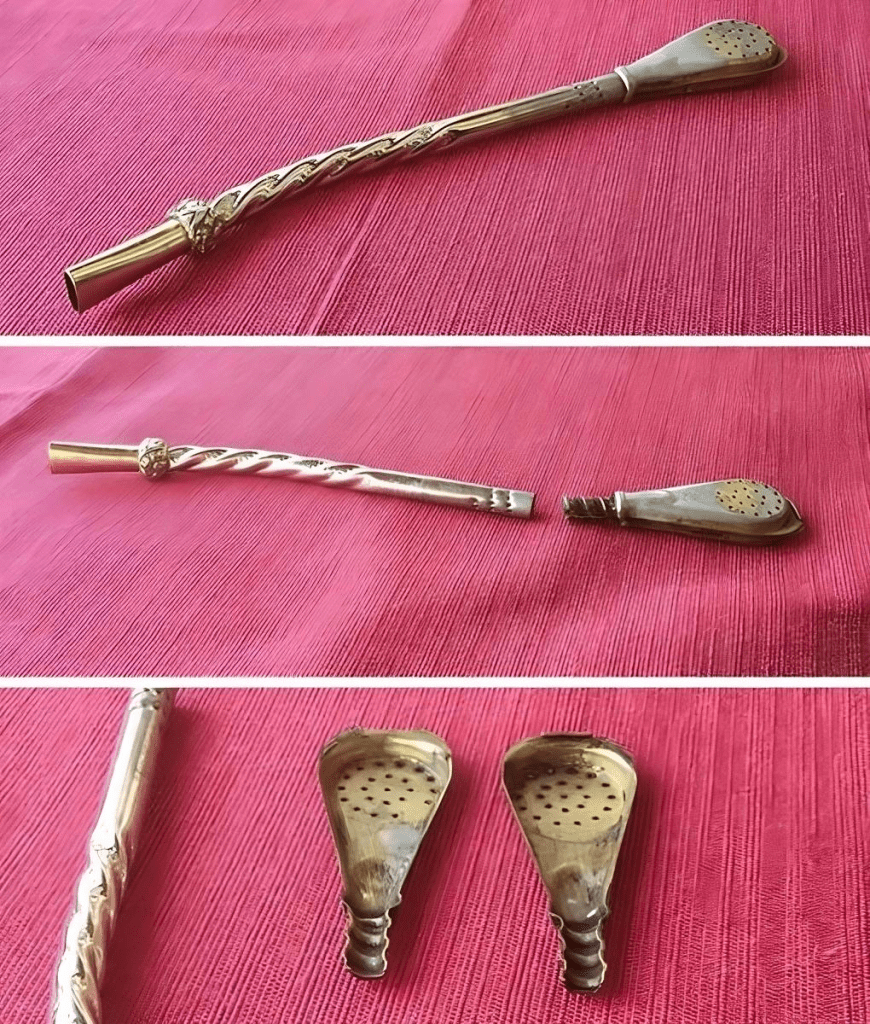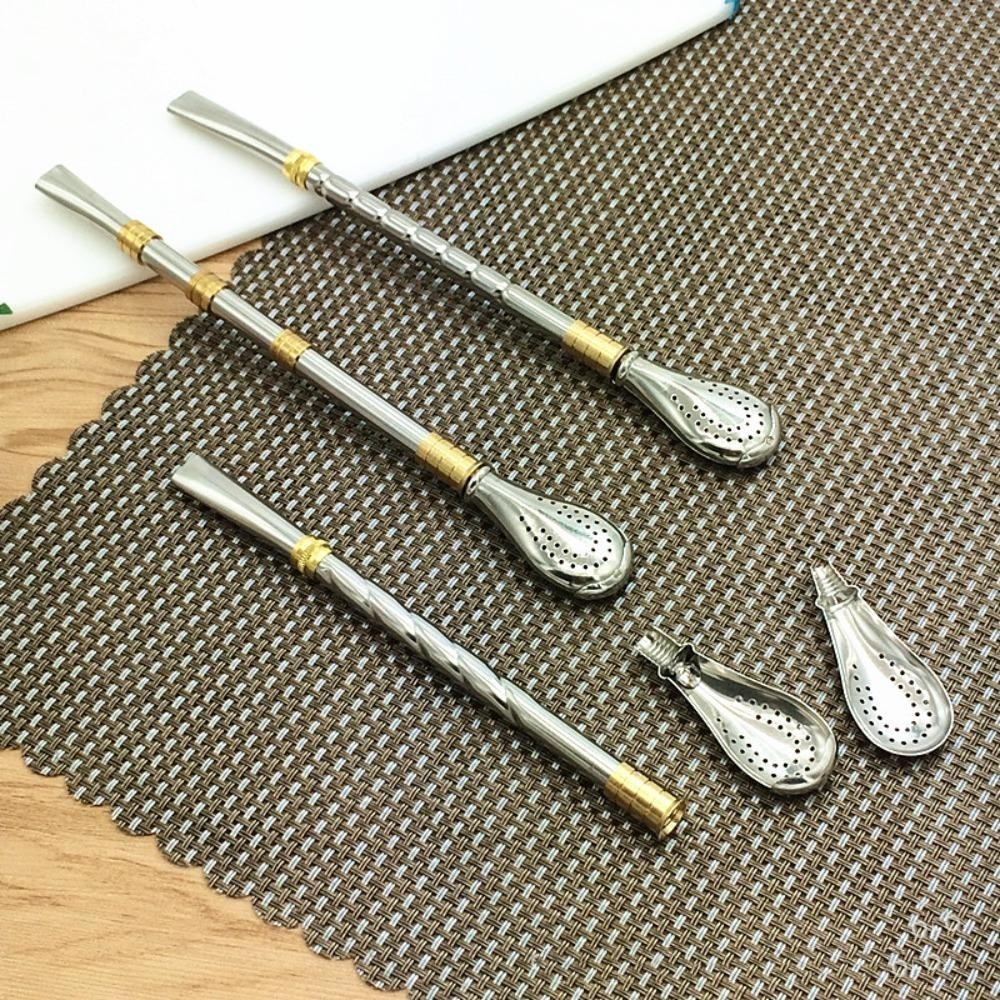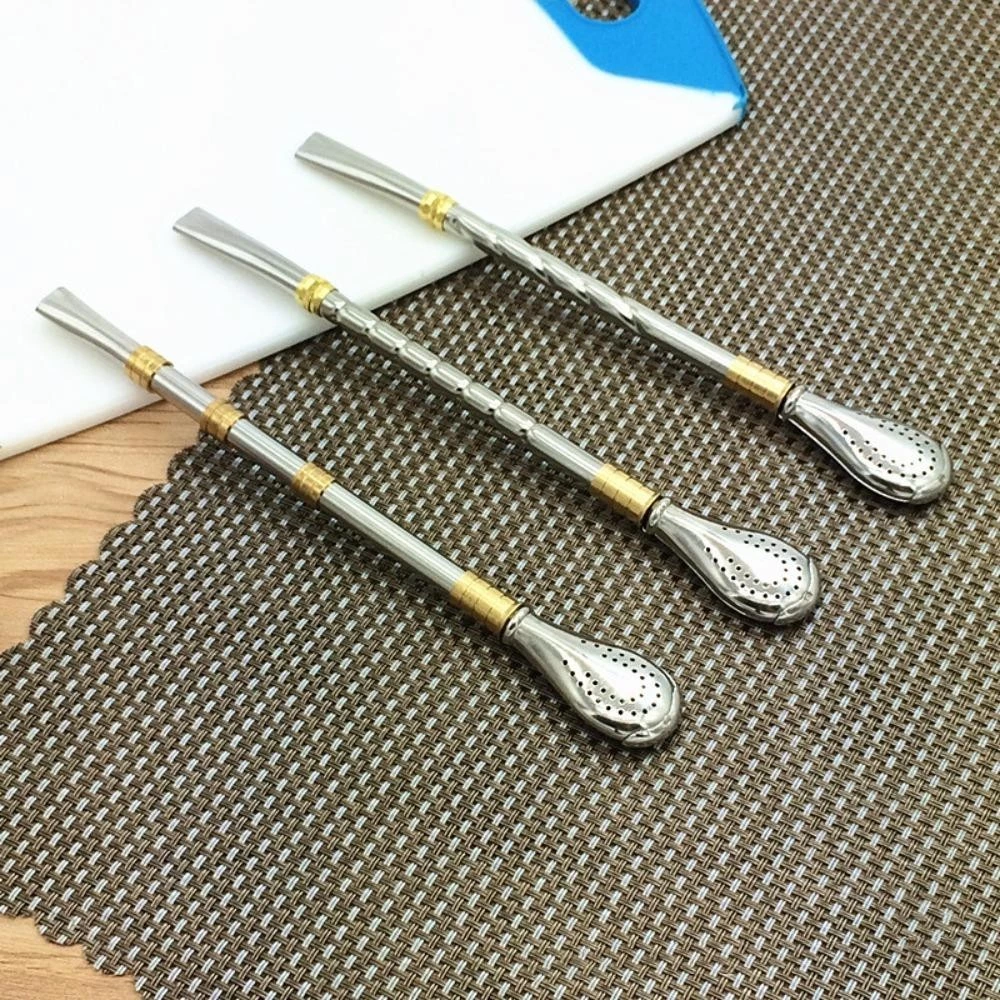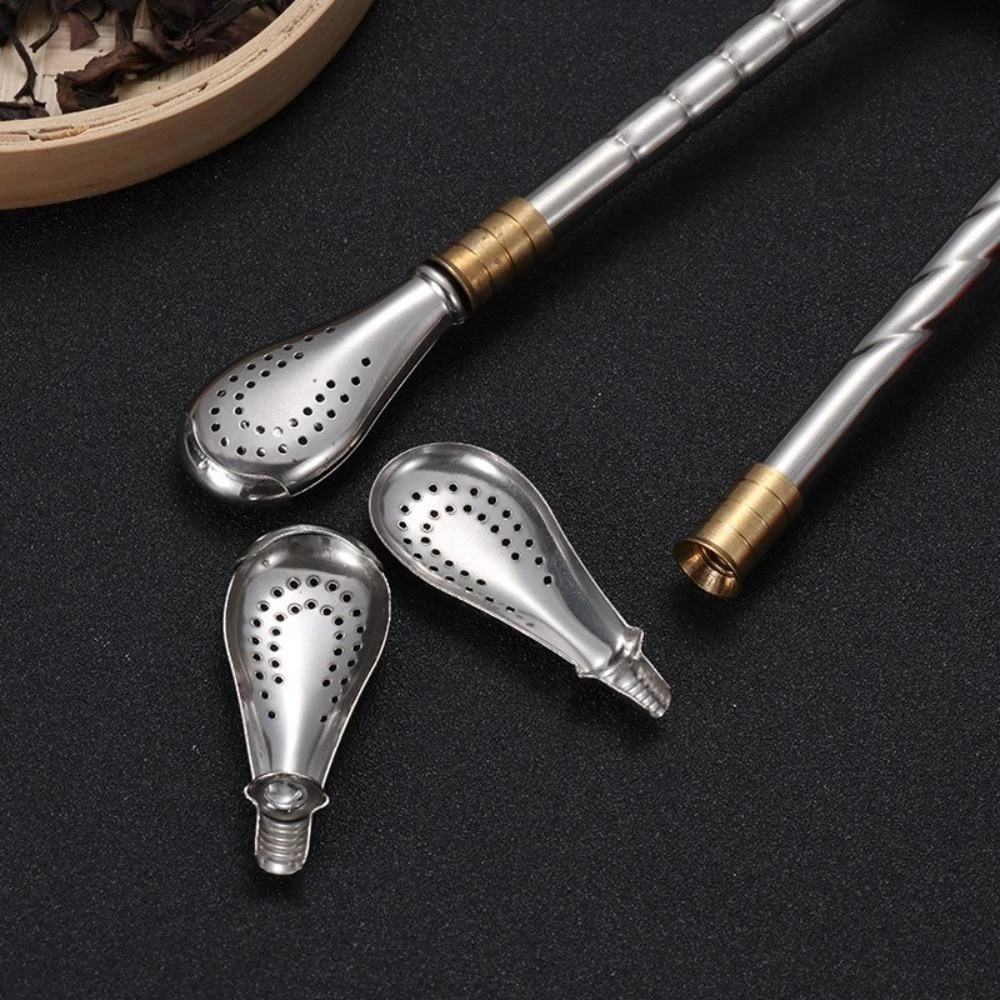A bombilla, also known as a bomba in Portuguese or massasa in Arabic, is more than just a simple drinking straw—it’s an essential tool for enjoying the beloved South American beverage, mate. This unique device, with its rich history and practical design, has been a staple in mate-drinking cultures for centuries. Let’s explore the origins, construction, and cultural significance of the bombilla, as well as how it plays a crucial role in the preparation and enjoyment of this traditional drink.
What is a Bombilla?

A bombilla is a specialized drinking straw used to sip mate, a traditional South American beverage made from the dried leaves of the yerba mate plant. What makes the bombilla unique is the perforated or filtered lower end, which allows the liquid to pass through while preventing the mate leaves, stems, and other debris from entering the drinker’s mouth.
This functional design, similar to a tea strainer, ensures a smooth drinking experience while keeping the beverage’s consistency intact. The bombilla is inserted into a gourd, also known as a mate gourd, which holds the brewed yerba mate. Traditionally, these straws are made from various metals, but their form and material have evolved over time to suit different needs and tastes.
The Materials: From Alpaca Silver to Stainless Steel
Traditional bombillas were crafted from a variety of materials, each reflecting the socioeconomic status of the user. The privileged classes often used bombillas made from silver or alpaca silver (a copper-nickel alloy known for its shine and durability). Silver bombillas, often combined with gold-plated heads, were not only functional but also symbols of wealth and status.
However, due to silver’s high thermal conductivity, these metal straws could get extremely hot when used with hot mate, requiring caution to avoid burns. To address this, many bombillas today are made from stainless steel, a material that is more affordable, durable, and easier to handle when drinking hot beverages.
For those of lesser means, bombillas were often made from hollow-stemmed cane or other organic materials, offering a more rustic and natural feel. Though not as durable as metal, these cane bombillas were a practical option for those seeking a more affordable alternative.
How Bombillas Work: Functionality Meets Tradition
The key function of a bombilla is to filter the mate infusion from the leaves, ensuring that the drinker enjoys only the liquid. The perforated end of the bombilla acts as a sieve, allowing water to pass through while keeping the mate leaves and debris out. This simple yet effective design has been used for generations, showcasing how functionality and tradition can go hand in hand.
Bombillas vary in length, but a common size is around 7 inches (18 cm), making them long enough to reach the bottom of the mate gourd while still being easy to use. Some modern bombillas even feature removable filters, which can be opened for easy cleaning, ensuring the bombilla stays hygienic and functional for years to come.
The Role of the Bombilla in Mate Drinking Culture
Mate is more than just a drink—it’s a social ritual deeply embedded in the cultures of countries like Argentina, Uruguay, Paraguay, and Brazil. Drinking mate is often a communal activity, where the gourd and bombilla are passed around among friends and family, each person taking turns sipping the drink.
The bombilla, in this context, becomes a symbol of sharing and hospitality. Passing the mate gourd and bombilla is a gesture of friendship, trust, and connection. The person who serves the mate, known as the cebador, is responsible for preparing and refilling the gourd, ensuring that each round is perfectly brewed.
In this tradition, the bombilla is more than just a tool; it is part of the ritual of mate drinking that brings people together. Whether made of humble cane or precious metals, the bombilla plays a crucial role in preserving this age-old custom.
The Evolution of Bombilla Materials: From Luxury to Practicality

As times changed, so did the materials used to craft bombillas. While silver bombillas were once the mark of the upper classes, modern bombillas made from stainless steel have become the go-to choice for most people. Stainless steel bombillas offer several advantages: they are durable, resistant to rust, easy to clean, and able to withstand high temperatures without conducting too much heat.
Though silver bombillas are still available and cherished for their traditional value and aesthetic appeal, stainless steel versions are more practical for everyday use. This shift in materials reflects the modernization of mate culture, where accessibility and ease of use are just as important as preserving the ritual.
The Dangers of Heat Conductivity in Metal Bombillas

One of the primary concerns with using metal bombillas—especially those made from silver or other metals with high thermal conductivity—is the risk of burns. When hot water is used to brew mate, the bombilla can quickly absorb heat, making it difficult to handle or sip from without burning your lips.
To mitigate this risk, modern bombillas are often designed with cooler-touch handles or constructed from materials like stainless steel, which doesn’t transfer heat as readily as silver or alpaca silver. Some bombillas also come with insulated tips to ensure a safer drinking experience, allowing the user to enjoy hot mate without discomfort.
The Revival of Traditional Bombillas in Contemporary Culture
In recent years, there has been a resurgence of interest in traditional bombillas, particularly among mate enthusiasts who appreciate the craftsmanship and cultural significance of these tools. Collectors seek out vintage silver bombillas, not just for their functionality but as pieces of art that embody the history of mate drinking.
At the same time, eco-conscious consumers are drawn to bombillas made from natural materials like bamboo or hollow-stemmed cane. These organic alternatives offer a more sustainable option for those looking to reduce their environmental footprint while still enjoying the tradition of mate.

The bombilla is much more than a simple drinking straw—it is a symbol of the rich cultural traditions surrounding mate drinking. From its origins in the upper classes with silver and gold-plated bombillas to its modern stainless steel counterparts, the bombilla has evolved while remaining an essential part of mate culture. Whether made from metal, cane, or bamboo, the bombilla continues to play a vital role in the social ritual of mate drinking, bringing people together in a shared experience that transcends time and borders.
By understanding the history, functionality, and cultural importance of the bombilla, we can gain a deeper appreciation for this humble yet indispensable tool in one of the world’s most cherished drinking traditions.


